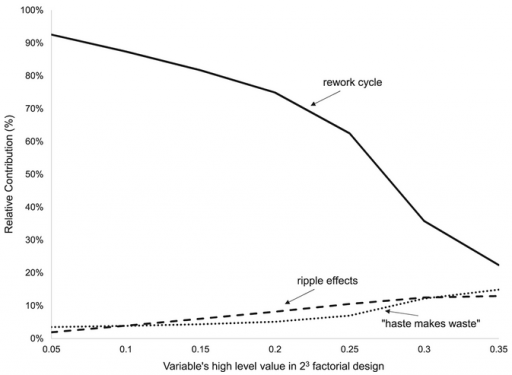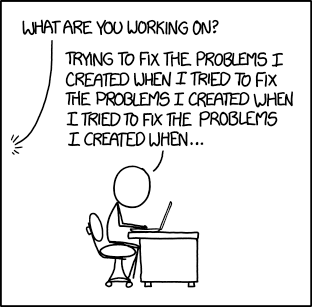I just published three short videos with sample models, illustrating representation of discrete and random events in Vensim.
Jay Forrester‘s advice from Industrial Dynamics is still highly relevant. Here’s an excerpt:
Chapter 5, Principles for Formulating Models
5.5 Continuous Flows
In formulating a model of an industrial operation, we suggest that the system be treated, at least initially, on the basis of continuous flows and interactions of the variables. Discreteness of events is entirely compatible with the concept of information-feedback systems, but we must be on guard against unnecessarily cluttering our formulation with the detail of discrete events that only obscure the momentum and continuity exhibited by our industrial systems.
In beginning, decisions should be formulated in the model as if they were continuously (but not implying instantaneously) responsive to the factors on which they are based. This means that decisions will not be formulated for intermittent reconsideration each week, month or year. For example, factory production capacity would vary continuously, not by discrete additions. Ordering would go on continuously, not monthly when the stock records are reviewed.
There are several reasons for recommending the initial formulation of a continuous model:
- Real systems are more nearly continuous than is commonly supposed …
- There will usually be considerable “aggregation” …
- A continuous-flow system is usually an effective first approximation …
- There is a natural tendency of model builders and executives to overstress the discontinuities of real situations. …
- A continuous-flow model helps to concentrate attention on the central framework of the system. …
- As a starting point, the dynamics of the continuous-flow model are usually easier to understand …
- A discontinuous model, which is evaluated at infrequent intervals, such as an economic model solved for a new set of values annually, should never be justified by the fact that data in the real system have been collected at such infrequent intervals. …
These comments should never be construed as suggesting that the model builder should lack interest in the microscopic separate events that occur in a continuous-flow channel. The course of the continuous flow is the course of the separate events in it. By studying individual events we get a picture of how decisions are made and how the flows are delayed. The study of individual events is on of our richest sources of information about the way the flow channels of the model should be constructed. When a decision is actually being made regularly on a periodic basis, like once a month, the continuous-flow equivalent channel should contain a delay of half the interval; this represents the average delay encountered by information in the channel.
The preceding comments do not imply that discreteness is difficult to represent, nor that it should forever be excluded from a model. At times it will become significant. For example, it may create a disturbance that will cause system fluctuations that can be mistakenly interreted as externally generated cycles (…). When a model has progressed to the point where such refinements are justified, and there is reason to believe that discreteness has a significant influence on system behavior, discontinuous variables should then be explored to determine their effect on the model.
[Ellipses added – see the original for elaboration.]







